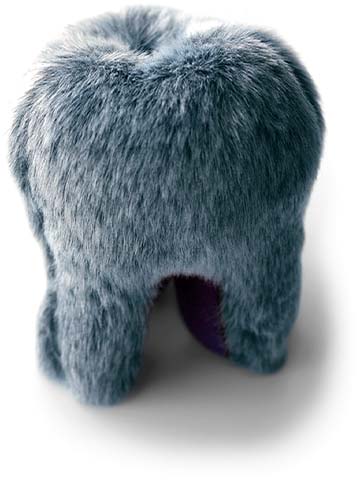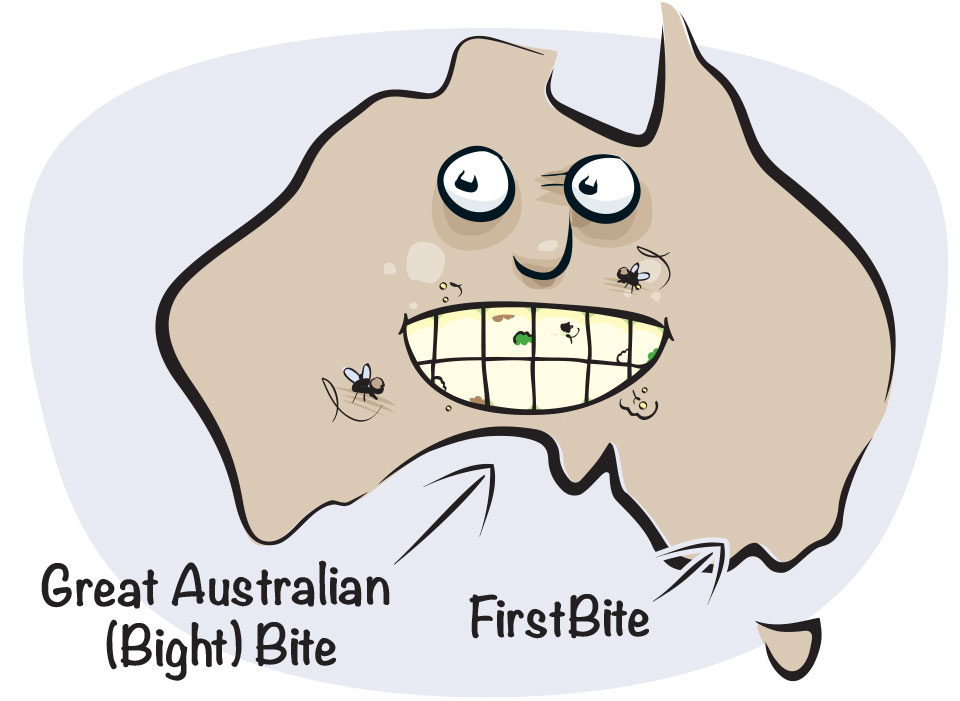We all know that furry tooth coating we wake up with from time to time. We call it furry teeth or fuzzy teeth. It can be annoying and inconvenient, but it can also lead to some concerning oral health issues.
Let’s answer the question, “Why do my teeth feel furry?”

What causes furry teeth?
Dirty teeth!
If you don’t regularly clean your teeth, a bacterial film grows across the surface of your teeth. In dentistry, we call this film plaque, and it feels sticky and furry when we run our tongue over it. Dental plaque buildup is easy to manage with regular brushing and flossing, but failure to remove plaque can lead to some serious dental presentations such as:
- tooth decay
- worn tooth enamel
- gum and jawbone deterioration (periodontitis).
What you eat
Eating foods rich in oxalic acid can leave a sticky coating on your teeth which can make them feel fuzzy or furry. Foods with high oxalic acid content include leafy greens such as kale or spinach, as well as beetroot, sweet potato and rhubarb. These foods are healthy, delicious and contain antioxidants and fibre to improve gut health, but it’s important to identify a balanced amount of these foods you can include in your diet.
Is your mouth dry?
If you’re experiencing a dry mouth, it’s a sign you may not be drinking enough water throughout the day. Water aids digestion and maintains your body’s natural pH levels. Not enough water also means it can be harder to remove plaque buildup.
Medication
Sometimes you may get furry teeth during or after some antibiotic treatments due to temporary imbalances in oral pH levels caused by these drugs. It’s essential that you maintain or even improve your oral care routine during a course of antibiotic medication with regular brushing and flossing.
How to get rid of furry teeth
1. Regular teeth brushing
If you’ve got a buildup of plaque, we see that as a warning sign that you need to brush your teeth more regularly. If your teeth don’t feel clean, then you most likely have some nasty plaque eating its way through your tooth enamel. We recommend brushing your teeth morning and evening, as well as 30 minutes after a meal.
2. Floss, floss, floss!
Flossing is one of the simplest tasks to include in your daily dental care routine. Regular flossing works in conjunction with regular teeth brushing to keep down the amount of plaque on your teeth.
3. Water, water everywhere
Water restores your mouth’s pH balance, which becomes altered after you eat acidic foods. Water also binds to particular sugar compounds in your saliva called mucopolysaccharides, creating a slippery substance that leaves your teeth feeling smooth rather than furry. So please make sure you drink adequate amounts of water throughout the day. We suggest drinking 2.5L (10 cups) a day for males and 2L (8 cups) a day for females. Pregnant or breastfeeding women should drink 9 cups a day. Children should drink between 4-8 cups a day (ranging from 4 cups for an infant to 8 cups a day for a healthy teenager).
4. Crunch time: fruit and vegetables
Particularly eating foods containing Vitamin C is a good way to get rid of oxalic acid. Vitamin C counteracts the sticky sensation you feel when eating foods rich in oxalic acid. But please eat those citrus fruits in moderation as too much citric acid can damage your teeth! Eating crunchy fruit and vegetables such as apples and carrots is a great way to help remove plaque and other accumulated content on your teeth. These fibre-rich foods have a rough surface, which helps to scrape away the bacteria and plaque on your teeth. And as another plus, foods rich in fibre stimulate your salivary glands, which allows for increased saliva production to rinse off any food particles remaining on your teeth.
My teeth still feel furry, so what next?
If you’re still experiencing that fuzzy or furry feeling on your teeth, it’s time to visit our Essendon dental clinic and have an appointment with one of our skilled and caring dental hygienists or dentists. At the appointment, you’ll receive a deep and thorough tooth clean & dental plaque removal and have your teeth examined for signs of any other oral conditions which could affect the surface of your teeth. You may even choose to have a fissure sealant treatment to protect your teeth from decay and damage from bacterial plaque buildup.

